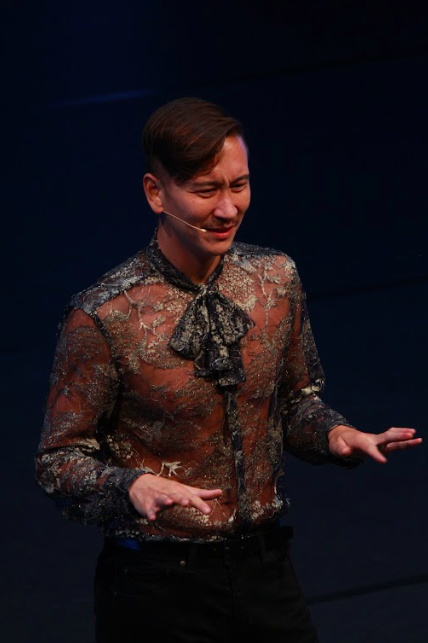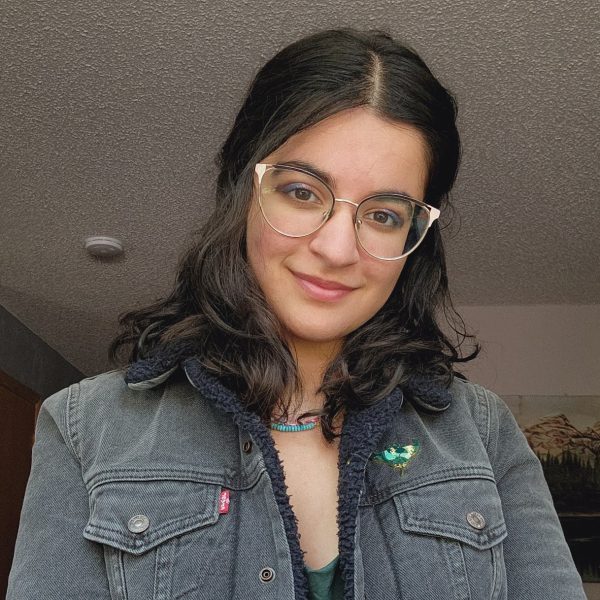Sixteen years ago, Phil Chan ’06 graduated as a dance major from Carleton College. Today he is a dancer, choreographer, author and co-founder of Final Bow for Yellowface. He’s also back at Carleton this term as a Benedict Distinguished Visitor Professor of Dance.
Chan attributes his success in part to his professor at Carleton, Mary Easter, reflecting, “She really pushed me to be a dancer, to go to New York and to try to make a career in this.” Chan continues, “I’m really passionate about education and giving back because so much of our field is not equipped to talking about race … Through my writing, through my teaching, [I’m] hopefully sharing some strategies to keep this art form alive and not just for white people.”
His course, “Performing the Orient,” focuses on the history of racism — specifically orientalism in ballet and how rechoreographing it is possible. “Carleton students are just as bright as I remember them to be … Everybody who’s in that course really wants to be there and really is genuinely curious, so it makes teaching for them a lot of fun.” For Chan, the return to Carleton is an opportunity to “[share] what I’m dorky about with people who are curious.”
Zoe Yamaguchi ’25, a student in Chan’s class, says she appreciates “the amount of gorgeous things and art that we get to watch … We start class every day, walking in and watching a clip of a ballet … I really enjoy taking classes that I feel like I grow as a person through too. And I do feel like this is like one of those classes.”
The class relies not just on textual information, but also audiovisual. Being able to see and hear the ballets being referenced brings a deeper understanding of ballet as an art form and how and why certain things are problematic, such as how the costuming, makeup, gestures and music are different in the “Chinese Tea Dance” than they are in the Sugar Plum pas de deux of the very same “Nutcracker”.
In class, Chan dances along with the videos, demonstrating the attitude position in the Rose Adagio — one of the most famous moments in ballet, known for being both technically difficult and beautiful — or the spirited pointing in the Fairy of Temperament variation of “Sleeping Beauty”, and provides interjections like “It gets even worse!” or calling the original “Swan Lake” a “flop.”
While screening these videos he also asks students to point out what they see: for example, differences in arms, makeup, staging and music and how these aspects progress through different eras of ballet. Through this exercise, he illustrates the stagnance of racism, sexism, and homophobia.
Outside of his class at Carleton, Chan has been working as the co-founder of Final Bow for Yellowface, which started when Peter Martins, artistic director of the New York City Ballet at the time, called him with concerns that their “Nutcracker” was antiquated. Per Chan, the ballet “for some companies makes up to 60% of their annual revenue,” explaining why it must be given such careful consideration.
The second act of the ballet features an array of dessert-themed divertissements: short yet difficult dances that have no purpose to the plot. The desserts have traditionally been associated with a culture: chocolate, Spanish; candy canes, Russian; marzipan, Danish; coffee, Arabian; and tea, Chinese. Each one displays stereotypical movement and music, and performances of the latter two have required dancers to “brown” or “yellow up.”
“The company’s been receiving thousands of letters over the years talking about how the second act of “The Nutcracker” makes them uncomfortable [but] he wasn’t comfortable making changes,” Chan explained. “He wanted to talk to me because of both my experience as a dancer — I know the choreography, I know the ballet very well — but also I have lived experience of being Chinese-American and could speak to the impact of how this dance would land on someone like me.”
“I left that meeting and I called my co-founder, Georgina Pazcoguin, the first Asian-American woman to make it out of the corps de ballet at New York City Ballet … and I said, ‘Holy shit, I think Peter Martins is gonna change The Nutcracker.’ And we realized in that moment that we had two choices,” Chan said. “We could just say, well, good job, New York City Ballet, pat on the back, go on [with] our normal busy lives. Or, we could look around to the rest of the landscape and realize so many other companies were doing yellowface.”
Today, over 50 ballet companies internationally have signed the Final Bow for Yellowface pledge to stop performing yellowface. There has also been a significant push in hiring more non-white dancers and promoting diversity and inclusion. “We need younger, browner people involved in this art form and racial caricature prevents younger brown people from appreciating the dance because if all you see is the yellowface or the Blackface, you’re not looking at the incredible artistry.” Chan said, “Ballet can be radical and urgent and relevant. It can make you feel real feelings, real living things that you can’t express any other way.”
Ballet isn’t the most “current” cultural output we have now, but “it does have a big impact, just being able to see yourself in a way that’s beautiful and not in a harmful way,” Yamaguchi says. “I could be seen as a beautiful person and a meaningful human being and not just something that used to be the joke in the storyline.”
Ballet as an art form is focused on its beauty. It needs to properly show that non-white people are deserving of that focus.
On Saturday, September 24th, the Oakland Ballet Company performed two of Chan’s works at Kracum Hall. One piece, “Ballet des Porcelaines”, was an undiscovered ballet from three hundred years ago about a prince turned to porcelain by a sorcerer and saved by his princess lover. The ballet was originally written with orientalist themes, but Chan’s revival demonstrates how those themes can be reworked into something respectful.
Chan’s choreography includes Chinese fan dance, sword dance and hand symbols from martial arts. “There’s quite a bit of my Chinese heritage in the dance, but there’s also my ballet and baroque training. My white heritage as well is also in the work, so it really is a hybrid approach.” Chan said.
Noel Wang ’25, an audience member at Saturday’s performance, comments, “I think the inclusion of historical references to Chinese porcelain figures — the fingers and the jumping positions — were really awesome … I love seeing an art form that is viewed as antiquated used to [refute] stereotypes and for education.”
Wang continues, “I truly support bringing these historical … works into the modern era and especially consulting marginalized voices in the dance community about how to do that.”
Chan founded a new nonprofit called Gold Standard Arts Foundation with the intention to help companies hire Asian designers, choreographers, composers, and storytellers of the future. “We’ve done a pretty good job so far of eradicating a lot of the yellowface. But the next step is saying how do we replace those fantasy Asian stories that we have so many of with actual Asian artists telling our own stories on our own terms? And that’s the shift that we’re pushing next.”
Chan works not to “cancel” past ballets but to add to existing repertoire. “Is it possible to have both? Yes, I think so. I think we can both look to the past and look forward to more diversity … just because we shift from Eurocentric to multiracial doesn’t mean we get rid of Shakespeare.”
Yamaguchi says, “[Ballet] is a living art and we have — if we want to keep it alive — to understand that we can change it. Phil has this really great analogy of living art not being a painting but as like a bonsai tree. You groom it and it’s okay to cut off branches as long as it’s still alive and growing in new directions.”













